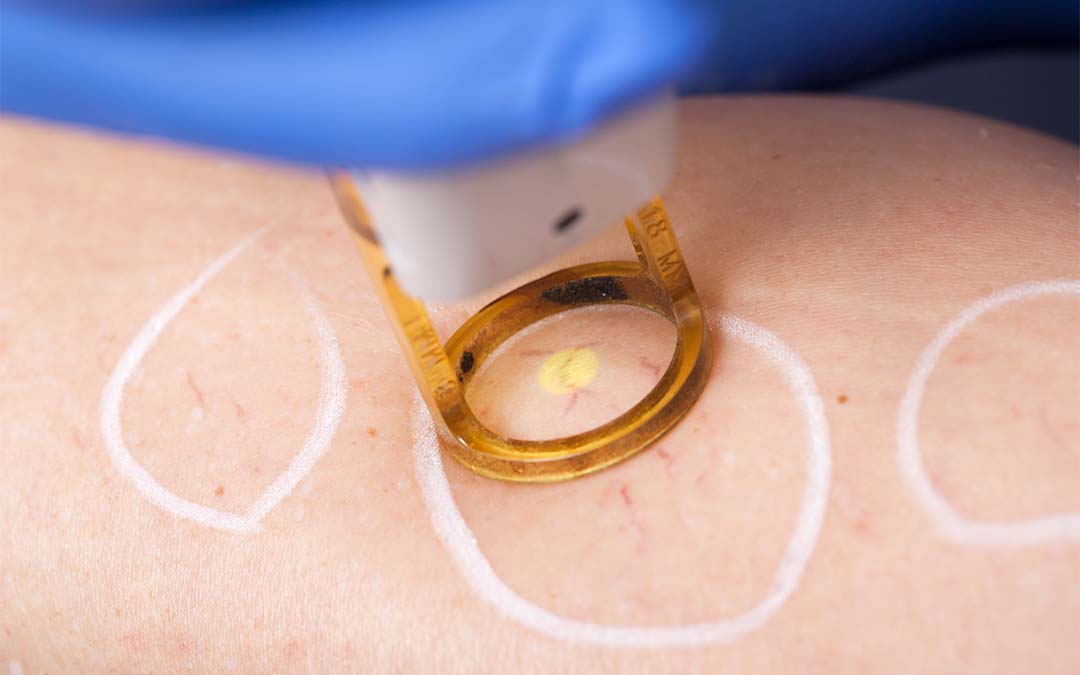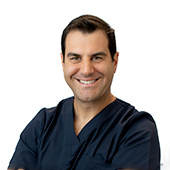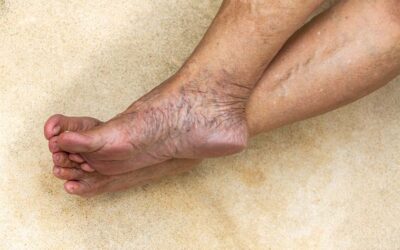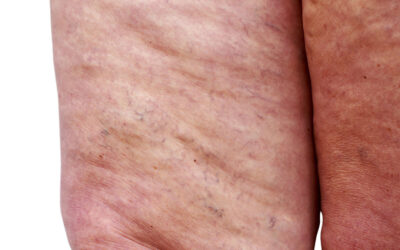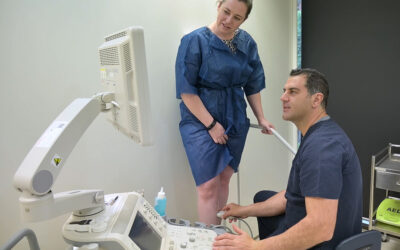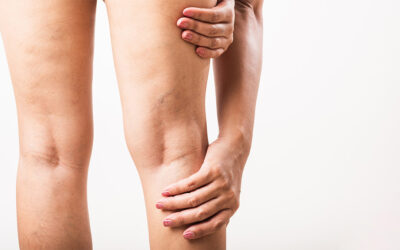Spider veins and broken capillaries can appear all over the body, but commonly on the face and legs. IPL (intense pulsed light) laser therapy is used widely for hair removal and other cosmetic procedures, including to treat spider veins at many beauty laser clinics. People ask us if it’s a good choice of treatment for spider and varicose veins. Let’s tease apart the details. To start, let’s understand the origin of spider veins (telangiectasia) and varicose veins.
The role of veins is to return blood to the heart and lungs to be reoxygenated. This is assisted by one-way valves along the interior of the veins, which allow blood to flow upward, but close to stop the backflow of blood.
Due to (often) genetic influences and factors like standing for long periods, hormonal changes, etc, these valves fail or become incompetent. The backflow of blood applies pressure to the veins as it gathers in one section, pooling there, and causing the vein to stand out on the surface of the skin.
The origin of spider veins is similar. When enough pressure has built up in the abnormal vein, the overflow of blood must go somewhere. This might mean more varicose veins, or it may mean smaller spider veins develop and fan out on the skin surface.
Is IPL a suitable treatment for spider veins?
Many people don’t have accompanying symptoms with spider veins, so they are chiefly concerned about their appearance, not the health implications of incompetent blood flow. This is not an uncommon way of thinking, especially for facial spider veins/broken capillaries, which generally are superficial and not serious. However, spider veins on the legs can be an indicator that something more serious is occurring in the vascular system. Spider veins on the legs can present as visible but with no symptoms, visible with symptoms, or not visible but with symptoms. They are not just cosmetic but may develop painful symptoms and chronic vein disease.
For leg veins, it is especially important that people have a comprehensive ultrasound examination. Whatever the treatment type you choose for spider veins, the danger is always that the underlying feeder veins might be overlooked, and the spider veins are not properly treated at all, hence the full scan is necessary.
Patients often don’t know a lot about varicose veins and have not made the connection between their problem veins and seemingly unrelated symptoms. This may include things like swelling, aching, or throbbing in the lower legs, itching near the veins, and leg cramps at night. As varicose veins and spider veins do not heal on their own, they need medical intervention.
Chronic venous disease, which can develop because of hereditary factors, or because varicose veins are left long untreated. Signs of this severe version of varicose vein disease are thickening of the skin of the lower leg or ankle (lipodermatosclerosis), swelling in the leg (oedema), venous eczema (venous dermatitis), hyperpigmentation (discolouration of the skin), and breakdown of the skin barrier, particularly around the ankle area (venous ulceration.) The symptoms may become worse with advancing age.
Lipodermatosclerosis can greatly affect the health of the lower leg and lead to complications such as severe inflammation (phlebitis) and infection (cellulitis). Varicose veins can form clots (thrombophlebitis) and venous ulcers can become quite troublesome and difficult to treat, particularly when they bleed, ooze, or become infected.
If the spider veins are being fed by underlying veins, even if you can’t see them on the skin – trying to laser the spider veins will lead to matting (clusters of spider veins breaking out on the skin surface). Dr Paraskevas strongly discourages the use of surface laser for spider veins unless the patient has been assessed for underlying incompetent veins.
When could IPL be used on spider veins?
The only situation surface laser could be used for spider veins is if they are completely isolated, on the face/torso, and in rare cases, on the legs, if there is a condition that is predominantly a spider vein condition ie: without deeper varicose veins feeding the spider veins. To be sure about this, an examination should be carried out by a phlebologist (vein doctor).
What are the other treatments for spider veins?
This is not to say that there are no effective treatments for spider veins. In fact, treatments for spider veins are excellent, walk-in, walk-out, non-surgical, and are usually just as quick as an IPL appointment, but more effective and have a more thorough treatment protocol.
Sclerotherapy involves injecting a sclerosant solution into the veins through a tiny needle. This solution irritates the interior of the vein, which collapses, seals shut and is slowly absorbed into the body.
For the treatment of large surface or internal varicose veins, other treatments may be employed depending on your needs, the diameter, and the location of the veins. Learn more about treatments endovenous laser ablation, radiofrequency ablation, VenaSeal medical glue, and ambulatory phlebectomy here.
Key Takeaways
- In the legs, spider veins are often caused by “overflow” from nearby varicose veins, whether they are visible or not.
- Underlying feeder veins must be addressed, and this is impossible with laser treatment. A scan is needed.
- Got spider veins on the ankles and feet? Learn more about it here.
- See a phlebologist to have a comprehensive ultrasound scan to trace the origin of the spider veins on the legs.

